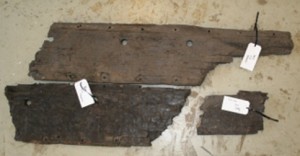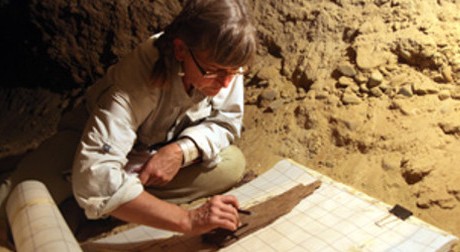Title photo: Reproduction of the Trojan Horse in Canakkale, photos in the text: worldnewsdailyreport.com
A group of Turkish archaeologists currently conducting excavations in the area of Hisarlik, the site of ancient Troy, reported that they have discovered a huge wooden structure, probably part of the mythical Trojan horse. Archaeologists have discovered dozens of wooden pieces with a length of 15 metres in an "unexpected" place in the ancient city, as reported by the Greek media.
Historians believe that the Trojan Horse in the form of a wooden figure of a horse had never existed. Many researchers state even today that it is a symbol of a powerful military machine that was used during the siege of Troy. The new discovery by archaeologists, however, seems to confirm the events described in the "Iliad".

Near the wooden structure, they have discovered a damaged bronze inscription that reads, "The Greeks dedicate it to goddess Athena for their return home." The excavations are taking place under the guidance of professors from Boston University Christine Morris and Chris Wilson. Both claim to be "quite confident" that the findings are part of the Trojan Horse. "Carbon dating shows that the wooden pieces have been there since the 12th or 11th century BC. References to ancient historians such as Eratosthenes and Proclus indicate that the Trojan War broke out at that time. We do not want to be too optimistic but we firmly believe that we have found the true Trojan Horse", they say.

The findings will be transferred to the Archaeological Museum in Istanbul where they will be on display very soon.
The fact of using the Trojan Horse by the Greeks is described by Virgil in his epic poem "Aeneid." The events that he presents occurred between Homer's "Iliad" and "Odyssey", and the basic part of "Aeneid". The epic poems "Little Iliad" and "Iliou Persis" mention as its constructor Epeius, the son of Panopeas from the area of Fokida, who was advised to build it by the goddess Athena herself. Epeius was a poor soldier, whose name is mentioned nowhere in the battles described in the "Iliad". He had even confessed that he was not particularly capable of participating in battles.
He created a hollow horse following the idea of Odysseus. The goal was to deceive the Trojans into accepting it as a gift from the Achaeans. In fact, the most important ancient Greek heroes were hiding inside. After the horse entered Troy, they came out of it and opened the gates for the rest to begin the conquest of the city.
The early images of the 8th-7th century BC present the horse as a huge structure with several holes, and the number of the soldiers hidden inside varies depending on the story and the epic poet.